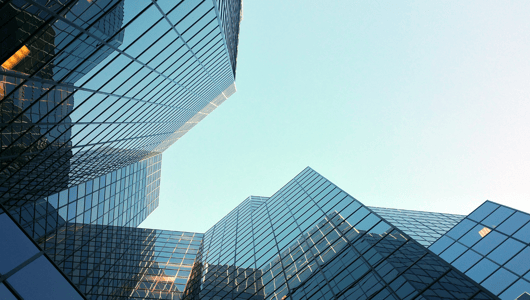The UK has been at the forefront of the world’s journey to net zero, being one of the first countries to pledge to reach the milestone by 2050.
As industry professionals, we are all aware of the statistics for the built environment, and how these emissions hinder our sustainability goals in the UK. It is testament to progress that businesses have embraced ESG and the environmental benefits of net zero, yet, despite this, there is much further to go. Meeting ESG goals will be underpinned by connectivity. Without high-quality broadband and 5G, there will be a slowing of the UK’s move towards net zero targets. Central to achieving the targets will be environmental monitoring to evidence building performance and adapt to future needs. In turn, this will have huge connectivity and capacity implications that will require high-grade digital infrastructure.
A vital utility
High-quality connectivity is no longer just a nice-to-have service: it is a vital utility as important as energy or water supply, and should be regarded as such.
While 48% of UK homes now have access to full fibre coverage, occupiers and residents will only continue to expect quick access to high levels of connectivity in a building, or the ability to install their own connections quickly and smoothly. At present, it can sometimes be relegated to an after thought, causing delays and problems further down the line. This is especially true for businesses, with only 56% of medium-sized companies, with 50-250 employees, having access to gigabit broadband capability. If connectivity is not brought to the top of the agenda, it will be challenging for commercial property landlords and investors to meet key environmental commitments and regulatory requirements. Environmental regulation around commercial property is tightening, most notably in the UK, with the Minimum Energy Efficiency Standard Regulations.
Investment mandate
While the government has pushed digital connectivity up the agenda, there needs to be a mandate for investment in connectivity in the widest sense. Here are our proposals to drive this:
- Roll-out of digital champions: The appointment of local digital champions who can help people and businesses understand the benefits of better connectivity, create plans that ensure high-quality connections and bring operators together to deliver it.
- Linking connectivity to the net zero challenge: A greater understanding on how fast connection scan support MEES ahead of changes to minimum requirements.
- Bottom-line benefits for businesses: Driving widespread education about the private and public benefits of fast connection, from financial and environmental to job creation. Recent data from Moody’s shows that lease lengths for US office buildings were on average nine months longer for well-connected buildings confirmed by a WiredScore certification. WiredScore also revealed that data from 2019 showed that a certified building in London commanded 4.7% more in rent than those without the accreditation.
- Prioritising sites for infrastructure: Ensuring planning consents and acquisitions for land or built assets that could be locations for electronic communication sites are fast-tracked and dealt with collaboratively. As recognised in the government’s Wireless Infrastructure Strategy, “Operators’ inability to secure suitable sites is one of the biggest barriers to network deployment.”
Future-proofing the tech
The conversation around connectivity remains too siloed. When we talk about making buildings that are fit for the future, we are often talking about energy. However, increasingly the conversation we are having with both residential and commercial developers, landlords and owners is around how to prevent obsolescence in a building’s tech infrastructure, to prevent them from having to regularly retrofit or upgrade, for greater long-term resilience and commercial success.
Businesses of all types need to consider future-proofing their connections, whether that is in one building or across a portfolio of real estate assets. In a practical sense, this will mean liaising with one or more broadband operators at each site and negotiating wayleaves, the legal agreements that allow operators to access buildings to install or maintain their hardware. It will also mean non-digital experts with responsibility for property assets starting to ask questions about future-proofing strategies. With further regulations coming down the tracks, the time for digital upgrade is now.
Darren Zitren is head of infrastructure at Cluttons.
This opinion piece featured in EG online.

Related insights

Commercial market update Spring 2024
It’s now widely accepted that interest rates have peaked, the key question now is when will the central bank start to cut rates, and how low will they go in the coming year.
Office market update Spring 2024
The structural change in the office market is ongoing, with strong appetite for best-in-class office space which meets high net-zero requirements and insipid demand for secondary or tertiary space. The investment market was quiet overall in 2023, although some notable deals were struck where pricing was competitive.
Retail market update Spring 2024
Take-up rose towards the end of 2023, but overall vacancy rates are flattered by the lack of supply in the market. The bright spot for landlords is luxury retail and retail parks, where consumer demand is still relatively stronger.
Industrial market update Spring 2024
Vacancy rates creep up and rents ease. The recalibration of the Industrial market after the pandemic uplift continues, but overall, the sector continues to outperform compared to other asset classes.
UK & London rental market update Spring 2024
Demand in the UK rental market hit new highs in 2022 and early 2023, and is now moderating, but is still higher than pre-pandemic averages.
UK & London sales market update Spring 2024
Average annual UK house prices falls hit a low of -5% in September last year, but have since moderated to around -2%.
Economic update Spring 2024
The economy grew more than expected in November, according to the latest data from the ONS, but there is still a risk that the UK could dip into recession.
Residential Forecast 2024
Our outlook for the residential market this year and into 2025.
Commercial market update Winter 2023
The Bank of England’s decision to keep the base rate on hold at 5.25% for the second consecutive time in November has raised the prospect that interest rates are at their peak.
Office market update Winter 2023
Flight to quality continues. There has never been such a distinct divergence between prime and secondary property, and this is still being driven by companies adjusting to changing working patterns as well as a desire to meet higher net-zero targets.
